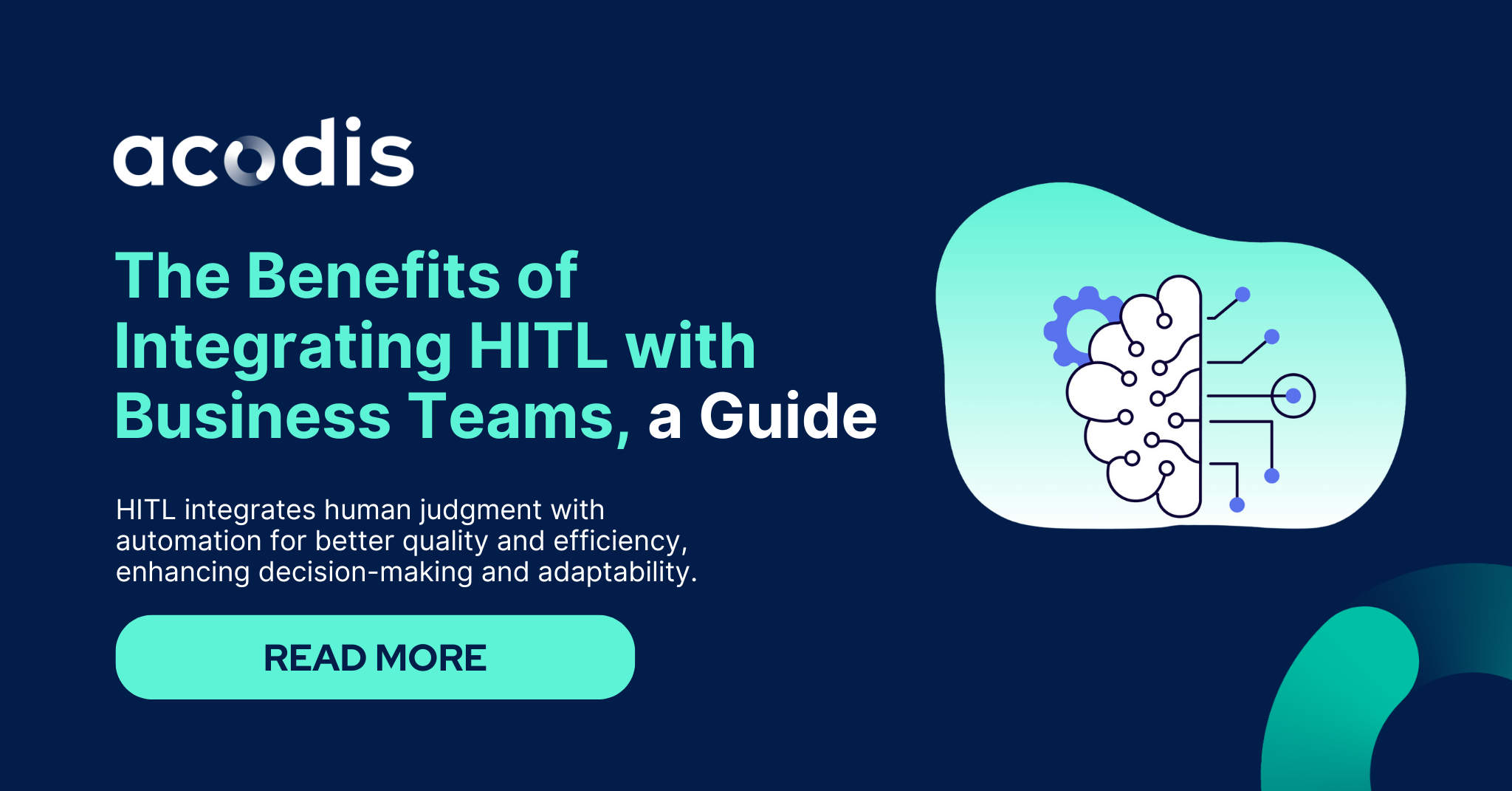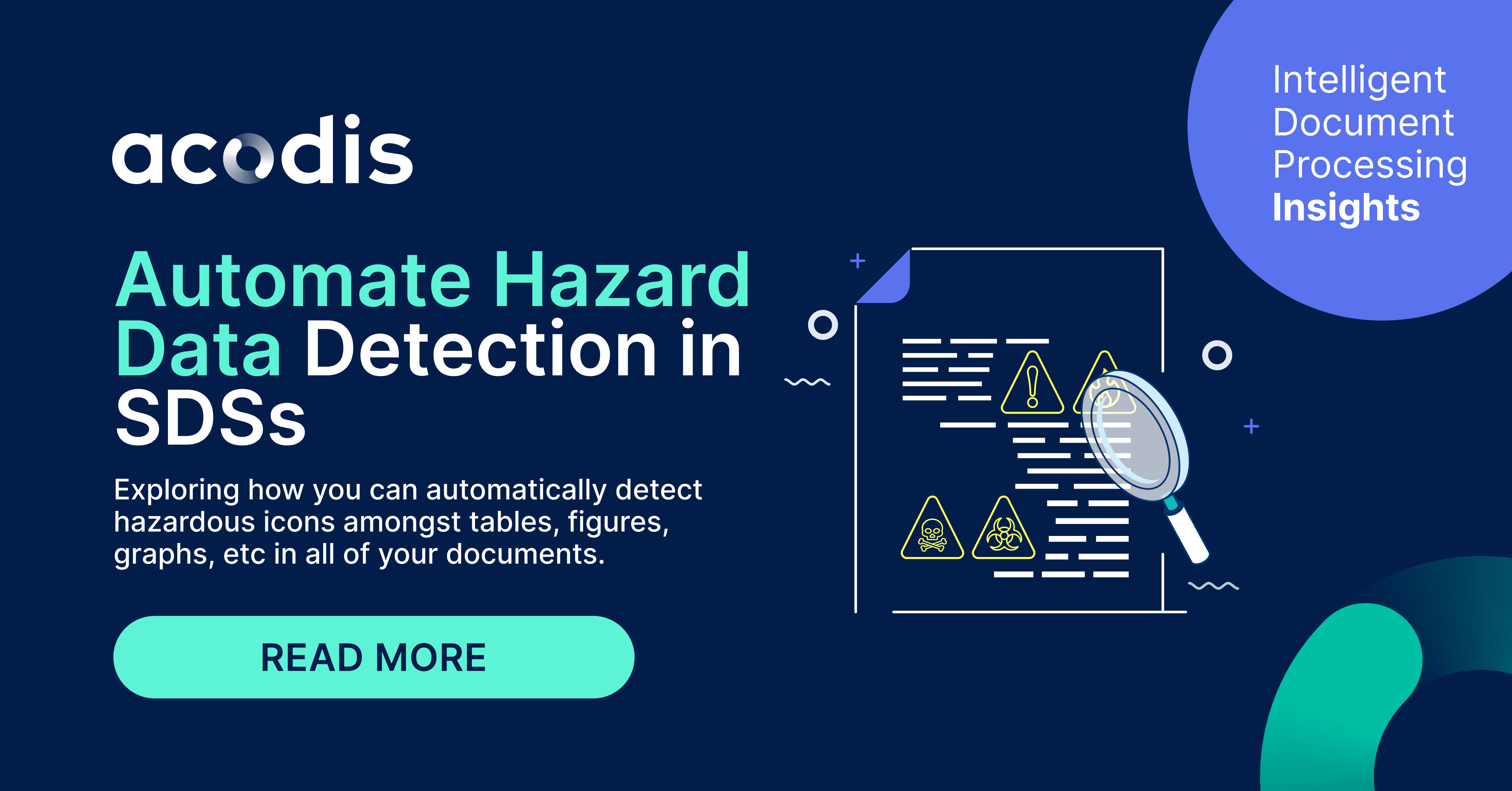At one point, Optical Character Recognition (OCR) was the most groundbreaking solution in the world of document processing.
It enabled teams to copy and paste text from image files of documents which completely revolutionized their document processing workflows.
However, now in our era of AI and digital transformations, OCR alone only scratches the surface of what is possible when digitizing documents.
Thanks to the combination of AI and OCR almost all document processing tasks can be automated and digitized too.
Table of Content:
- What is Document Digitization
- How Document Digitization With OCR Works
- Disadvantages of Document Digitization With OCR Alone
- OCR Digitization Doesn’t Eliminate Manual Data Entry
- How Document Digitization With OCR & Deep Learning Works
- Why Document Digitization With Intelligent Document Processing (IDP) is Groundbreaking
- Benefits of Document Digitization With Acodis
Video: Document Digitization With OCR Explained in 2 Minutes
What Is Document Digitization
Traditionally, document digitization is the process of converting physical documents into a digital format, so that storage, collection, and processing can take place virtually.
Today document digitization encompasses almost all facets of a document’s processing lifecycle such as the import, categorization, data labelling, data review, and data export stages.
How Document Digitization With OCR Works
OCR transforms the text on scans or images of documents into selectable and modifiable characters that teams can then copy/paste and reuse for other purposes.
OCR is a powerful document digitization tool because it allows teams to copy and paste information from documents into databases rather than having to type that information again.
Disadvantages of Document Digitization With OCR Alone
Though a great tool, OCR only digitizes your documents, not your document-related tasks. It only focuses on the most basic part— making the text in those documents ready for teams to copy and paste.
In the past this workflow change was a gamechanger but today unstructured data is rapidly growing and the document processing tasks are continuously getting more complex and labour-intensive.
OCR Digitization Doesn’t Eliminate Manual Data Entry
Even with OCR, teams still need to manually import, categorize, extract, review, and validate data from documents before finally exporting it into their databases.
Teams spend about 6 hours per week on these repetitive tasks, which translates to a long-term loss of time and money for companies.
Furthermore, repetitive manual tasks are prone to errors and impact workforce job satisfaction and staff retention rates.
How Document Digitization With OCR & Deep Learning Works
By combining AI with OCR, Intelligent Document Processing (IDP) enables teams to digitize and automate almost all their document-related tasks.
IDP automatically imports documents, categorizes them, labels the data you repeatedly select, reviews its accuracy, and exports that specific bulk information in an XML or JSON format in seconds.
Also, the inclusion of human-in-the-loop functionality ensures that all users retain complete oversight and control over the process and final data export.
This solution enables teams to digitize their document-related processes like never before, reducing the necessity for human involvement by 87.4% without sacrificing accuracy.

Why Document Digitization With IDP is Groundbreaking
Unlike other document processing solutions, IDP is not template-based and doesn’t require a document to meet specific parameters to function accurately.
IDP uses deep learning to improve its performance based on the user’s choices and feedback, enabling this solution to adapt and process any document regardless of complexity.
This unmatched versatility makes IDP the most scalable document digitization solution on the market.
Document Digitization With Acodis Benefits
- No-code Platform: Build AI models that process your documents without knowing a line of code.
- Human-in-the-loop: Assign user roles, access audit trails, and customize validation parameters and retain complete oversight and control over the process and final data export.
- Cutting-edge AI: Our AI models learn to process your documents in each use case exactly how you would from start to finish.
- Data Security: Acodis has the ISO and SOC2 certifications to keep your data safe and you can adopt our solution on-premises or remotely.
- Any Language & Any Document Type: Process any document with Acodis no matter the language, complexity, or volume.
- Easy Integration: You can integrate Acodis with your existing processes without needing help from your IT department.
- Automatic Table Extraction: Save hours on reconstructing table data. Acodis automatically detects and extracts table content for you while preserving the original data’s hierarchal structure.
Schedule a meeting with one of our document solution experts.




